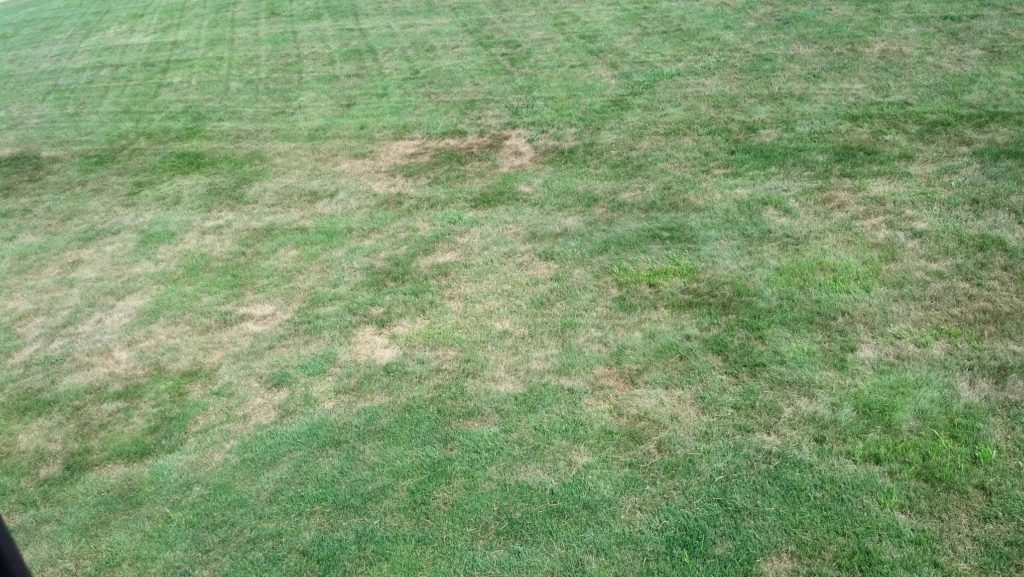How to Save Your Super Dry Lawn in South Florida

The long, hot days and dry weather currently in South Florida has created some of the worst drought conditions. Homeowners across much of South Florida are experiencing parched, dry grass and brown lawns. The good news is that despite your lawns structure and appearance, grass is surprisingly resilient. Most types of grass can survive extended periods of drought, and although it may look dead, dry and limp they're often only dormant, awaiting the next rainstorm.
To determine if your lawn is dormant or dead, inspect it down at the soil level. Lawns that have gone dormant will have brown leaves, but the crown at the base of the leaves will still be green, and the roots will have a healthy off-white color. If your lawn is completely dead, the entire plant—leaves, crowns, and roots—will be brown and brittle.
If your lawn is in fact dead, your only options are to either re-seed or lay sod. But barring that fate, you can help save your troubled or dormant lawn, though it won't be easy.
To Water, or Not to Water
The best way to protect your lawn during a drought or dry weather is to simply water the grass on a regular basis. Unfortunately, that's not always an option. Most towns institute water restrictions during a drought, making it illegal to water your lawn. And if your in Loxahatchee like us, your home draws water from a deep well. This means the underground water table will be much lower than normal and the well won't be able to supply enough water for both domestic use and lawn irrigation.
Even if you can legally water your lawn (for now), it might not be the best idea. According to the Lawn Institute, a nonprofit lawn-research corporation, it's better to halt irrigation at the beginning of a drought than to water a lawn for a short period of time and then stop. A brown, dormant lawn may actually be in better condition to survive a drought than a lawn that was occasionally watered.
So let's assume that—like most folks—you can't water during a drought, or you fear your town might put such restrictions in place. Now what?
During the Dry Weather
- De-thatch. To help your lawn absorb what little moisture is available, use a de-thatcher. Thatch is simply an over-accumulation of dead organic lawn matter, such as grass clippings and shredded leaves. Removing thatch is important any time of the year but especially during a drought.
- Aerate. Use a manual (or, better yet, power) aerator to punch holes in the lawn. The holes will deliver any moisture directly to the lawn's root system.
- Keep on mowing. Grass will eventually stop growing during a drought, but mow as often as necessary, never removing more than one-third of the grass blades. Sharpen your mower blades at least twice during the mowing season. Dull blades tend to rip the grass, leaving jagged edges that quickly dry out and turn brown.
- Don't bag clippings. Leaving grass clippings on the lawn after a mowing or two can provide much needed moisture. Just don't let them get too thick or clump together in mats, or they'll suffocate the lawn (see tip No. 1).
- Stay off the lawn. Eliminate as much traffic on the lawn as possible, including foot traffic and lawn equipment. The weight of all this activity will compact the soil, making it more difficult for the lawn to absorb moisture.
After the Dry Weather
Once the drought ends, most types of grass slowly recover on their own. You can help speed along the process with these four simple steps.
- Water thoroughly. The obvious first step. Once water restrictions are lifted, soak the lawn to restore the soil's moisture and to initiate new root growth. It's especially important to water grass that's growing on tops of hills where the wind can dry out the lawn, and on sloped areas where water tends to run off before it can soak in. Water in the early morning before the sun gets high in the sky and starts evaporating the moisture.
- Fertilize. After about two weeks of watering, use a broadcast spreader to apply a balanced fertilizer with proportions as close as possible to 4-1-2 for nitrogen, phosphorus, and potassium. (High-nitrogen fertilizers could hurt the lawn if extremely hot, dry weather returns.)
- Kill weeds. Once the grass is growing strong, treat individual weeds—not the entire lawn—with an herbicide. By eliminating weeds, there will be more moisture and nutrients available for the grass. And as the lawn thickens, it'll eventually crowd out the weeds on its own.
- Maintain. Resume your regular lawn-maintenance schedule, which should include consistent watering, mowing, thatch removal, and aeration.
If you have trees that are brown thats a different story! Contact us today to come give you a free evaluation in Palm Beach County!
